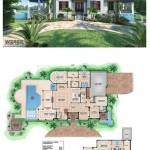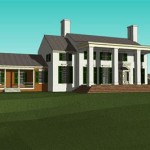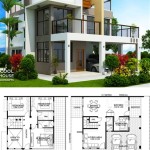Small Old Fashioned House Plans
Small old fashioned house plans offer a charming blend of classic architectural styles and practical, compact living. These plans often evoke a sense of nostalgia, drawing inspiration from various historical periods and regional traditions. They provide homeowners with the opportunity to enjoy timeless aesthetics while embracing a more manageable and potentially cost-effective lifestyle.
Several key architectural styles influence small old fashioned house plans. Common examples include Craftsman, Victorian, Farmhouse, and Colonial designs. Craftsman bungalows, characterized by low-pitched roofs, wide porches, and exposed rafters, offer a comfortable and inviting atmosphere. Victorian-inspired plans feature intricate detailing, decorative trim, and often include turrets or bay windows. Farmhouse plans emphasize simplicity and practicality, showcasing large porches, symmetrical facades, and gabled roofs. Colonial designs, known for their symmetrical layouts, multi-paned windows, and prominent entryways, exude a sense of elegance and formality.
Size considerations are paramount when choosing a small old fashioned house plan. These plans typically range from under 1,000 square feet to around 2,000 square feet, maximizing efficiency and minimizing wasted space. Careful planning allows architects and designers to incorporate all the necessary living spaces while maintaining a cozy and intimate feel. Open-concept layouts can create a sense of spaciousness within a smaller footprint, while strategically placed windows maximize natural light and ventilation.
Functionality and modern amenities are seamlessly integrated into small old fashioned house plans. While the exterior aesthetic may evoke a bygone era, the interior can be designed to accommodate contemporary lifestyles. Modern kitchens with updated appliances and efficient layouts, comfortable bathrooms with current fixtures, and ample storage solutions are incorporated without compromising the overall historic charm.
The benefits of choosing a small old fashioned house plan are numerous. From a financial perspective, smaller homes often translate to lower construction costs, reduced property taxes, and decreased utility bills. The smaller footprint requires less material and labor during construction, and the reduced living space simplifies heating and cooling. Maintenance also becomes more manageable, requiring less time and expense for upkeep and repairs.
Beyond the financial advantages, smaller homes promote a simpler, more intentional lifestyle. Less space encourages decluttering and mindful consumption, fostering a sense of calm and tranquility. The cozy atmosphere encourages closer family connections and a greater appreciation for shared spaces.
Customization options are readily available for small old fashioned house plans. Homeowners can work with architects and designers to tailor the plan to their specific needs and preferences. Modifying room sizes, adjusting layouts, and selecting specific finishes allow for a personalized touch, ensuring the home perfectly reflects the homeowner's vision.
Finding the right small old fashioned house plan requires careful consideration of various factors. Researching different architectural styles, determining desired square footage, and establishing a budget are essential first steps. Consulting with architects and builders provides valuable insights and guidance throughout the process, ensuring the final design meets all practical and aesthetic requirements.
Numerous online resources and publications offer a vast selection of small old fashioned house plans. Reputable architectural design firms and plan providers showcase a diverse range of styles and sizes, allowing homeowners to explore various options and find the perfect fit. Working with a qualified professional ensures the plan adheres to building codes and incorporates sound structural design principles.
Sustainability is an increasingly important consideration in modern home design, and small old fashioned house plans can readily incorporate eco-friendly features. Utilizing energy-efficient appliances, incorporating passive solar design principles, and selecting sustainable building materials contribute to a reduced environmental footprint and lower operating costs. These features can be seamlessly integrated into the design without compromising the desired aesthetic.
The enduring appeal of small old fashioned house plans lies in their ability to combine classic charm with practical modern living. These plans offer a unique blend of historical aesthetics, manageable size, and customizable features, providing homeowners with a timeless and fulfilling living experience.
Landscaping plays a significant role in enhancing the overall aesthetic of a small old fashioned house. Choosing appropriate plantings, creating inviting outdoor spaces, and incorporating period-specific landscaping elements further enhance the home's charm and curb appeal. A well-designed landscape complements the architectural style and creates a welcoming and harmonious environment.
Ultimately, choosing a small old fashioned house plan is a deeply personal decision. By carefully considering individual needs, preferences, and lifestyle, homeowners can find a plan that reflects their vision and provides a comfortable, charming, and enduring home for years to come.

Victorian House Plans And Small Cottage Designs

Small Victorian Cottage House Plans Old Floor Elegant

Victorian Small House Plans

Wildwood Homes Being A Collection Of Houses Victorian House Plans Bungalow Cottage Floor

Victorian House Plans And Small Cottage Designs

New House Floor Plans Old Charm

1920 National Plan Service Cottage House Plans Vintage Sims
Country Floor Plan 2 Bedrms 1 Baths 974 Sq Ft 157 1129

11 Amazing Rustic Farmhouse Plans For Tight Budget Craft Mart

Small Cottage House Plans 1881 Antique Victorian Architecture Vintage








